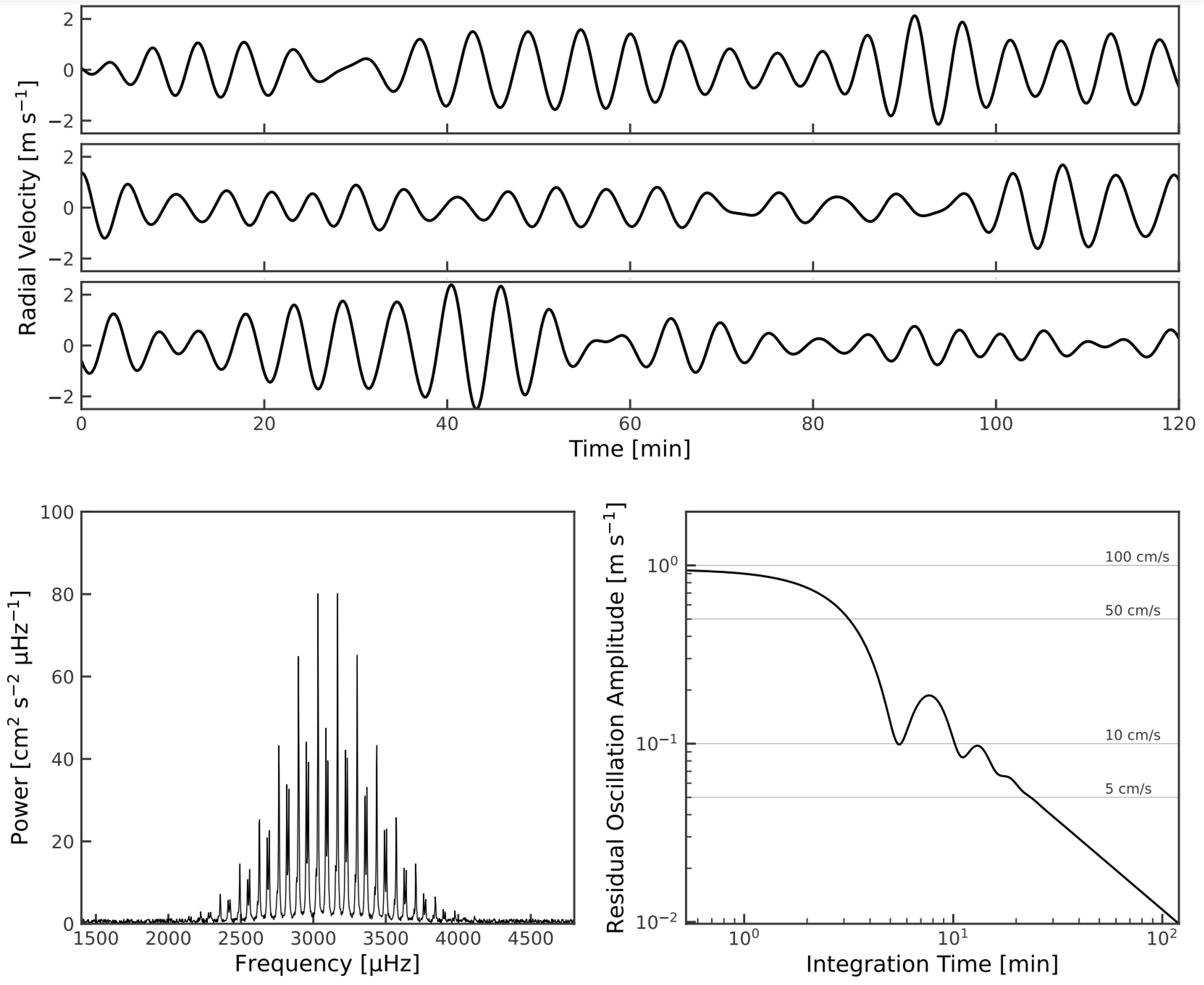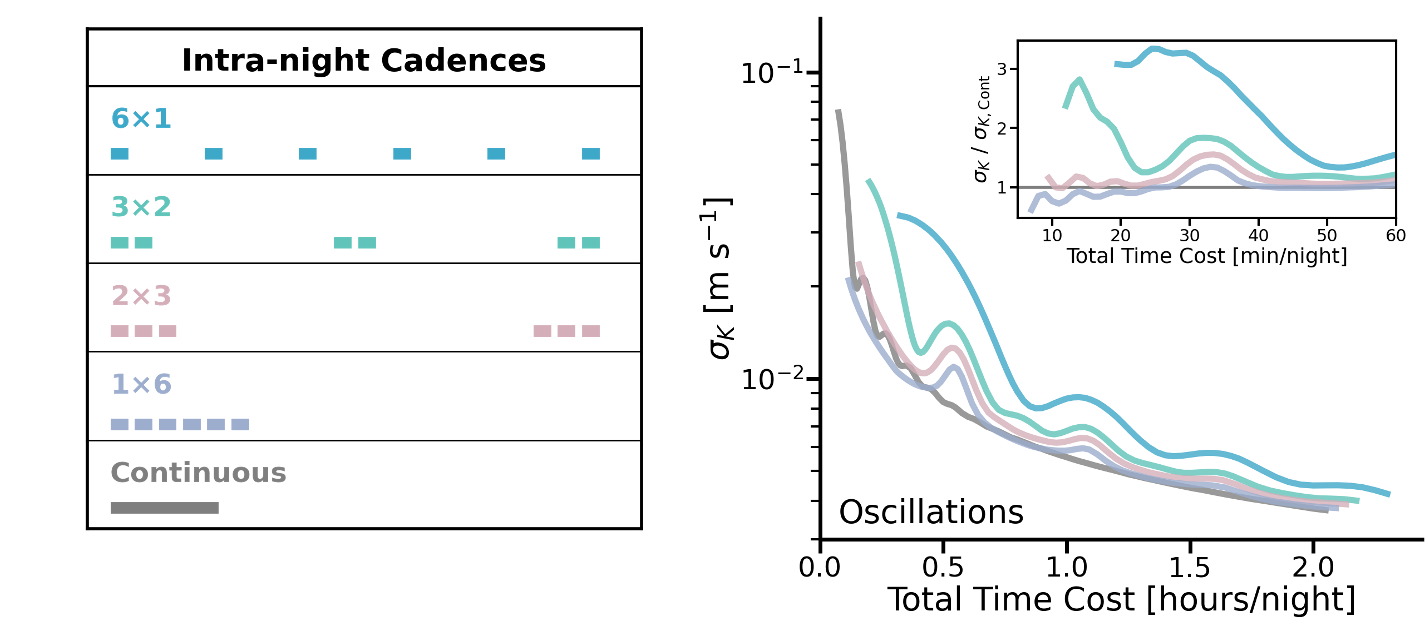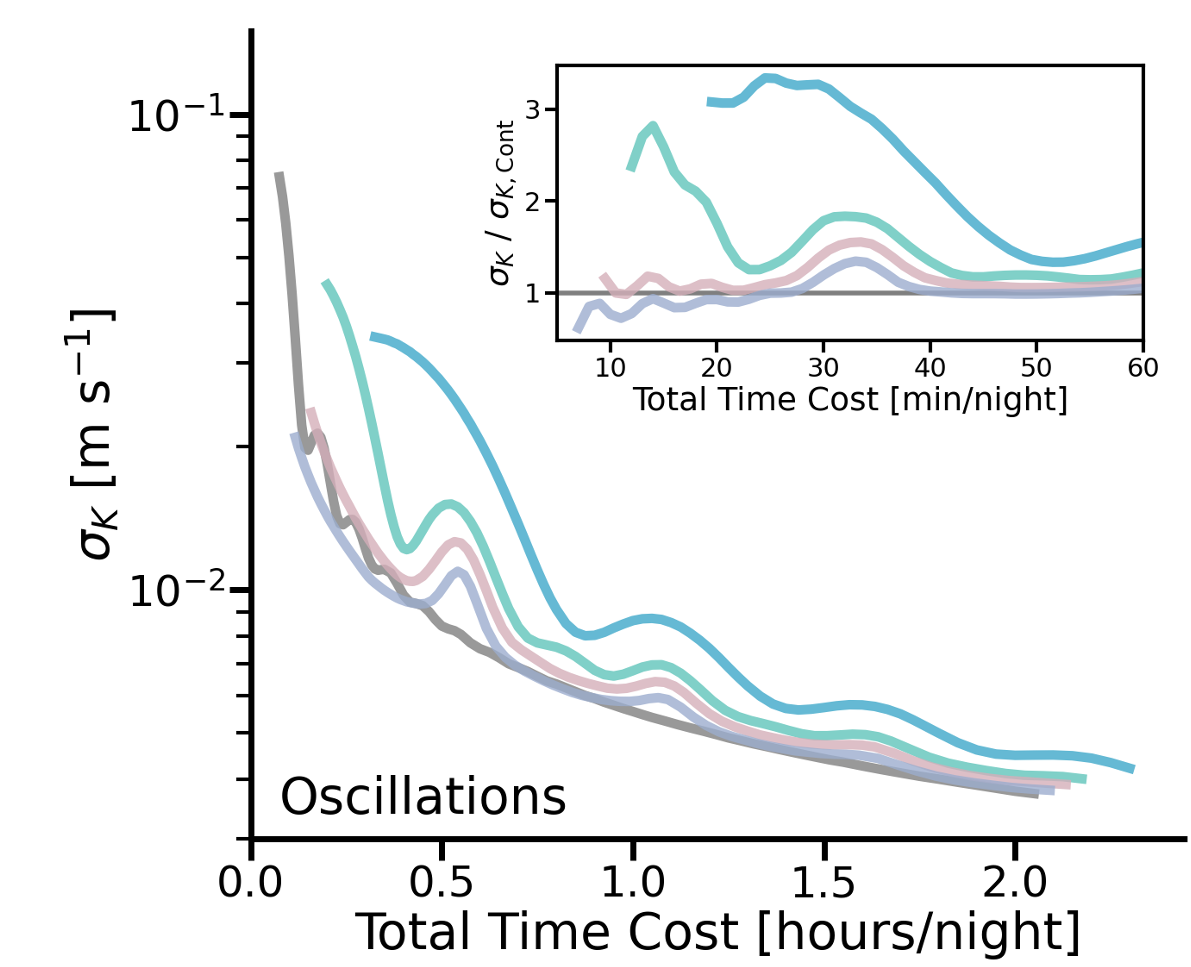Beating down the noise
Pressure-driven expansion and contraction of the outer convective layers of stellar envelopes, known as "p-mode" oscillations, produce apparent radial velocity variations. Multiple modes are active simultaneously, and while the exact interference pattern can not easily be predicted given the stochastic excitation and damping of oscillations, the net RMS is typically on the order of ~1 m s-1 for Sun-like stars. Left unmitigated, these variations would be a significant obstacle to the detection of Earth-like exoplanets, which induce signals with amplitudes of just 10 cm s-1. But p-mode oscillations are rapid variations, operating on timescales of just 5-10 minutes. So if the mode frequencies are known, it is possible to average out, or "filter", the bulk of the signal with carefully timed exposures. A clever oscillation mitigation model was laid out by Chaplin et al. (2019), and I and others have adopted it in designing observing strategies for high precision radial velocity measurements to keep the residual p-mode signal below a tolerable threshold. A versatile python library for predicting residual oscillation amplitudes and filtering timescales can be found on my github here: https://github.com/afgupta/rv_oscillation_filtering

Scaling from Solar
A key requirement for properly averaging out p-mode signals is knowledge of fundamental stellar properties, most notably the density, surface gravity, and effective temperature, which dictate the structure of the stellar interior and envelope and thus the p-mode frequencies and amplitudes. It is common practice to start with the known Solar p-mode frequencies and amplitudes and use measures stellar parameters to scale these for other stars. While preparing for the NEID Earth Twin Survey, my team was interested in verifying that these scaling relations were sufficiently accurate and that oscillations could indeed be averaged out in the expected manner. To test this, we used NEID to obtain a 6.5-hour, high-cadence sequence of RVs for a bright subgiant star. Though we confirmed that the oscillation frequencies aligned with our expectations from scaling relations, the amplitudes were much weaker, pointing to a pronounced dependence on second order effects. A more detailed summary of these results can be found in our paper (Gupta et al. 2022)

Sampling vs. Averaging?
Because oscillation timescales are so short, with the strongest p-mode frequencies comparable to the duration of a single exposure for typical radial velocity targets, our first instinct has always been to average them out. This differs from the standard approach to mitigating correlated noise that operates on long timescales (e.g., weeks to months), for which astronomers typically attempt to sample the signals at high cadence and then model them out. But what if we could apply this same approach to oscillations?
In my recent study of radial velocity survey strategies (Gupta & Bedell 2024; see also Information Theory), the efficacy of sampling p-mode oscillations was among the strategies I tested. We found that, in the case that oscillations are the only source of variability and the stellar parameters are well constrained, finely sampling the signal can actually produce better results. This gets complicated when we introduce, e.g., photon noise and other stellar variability, But new spectrographs such as the Keck Planet Finder with fast readout modes could facilitate this as a viable observing strategy.


